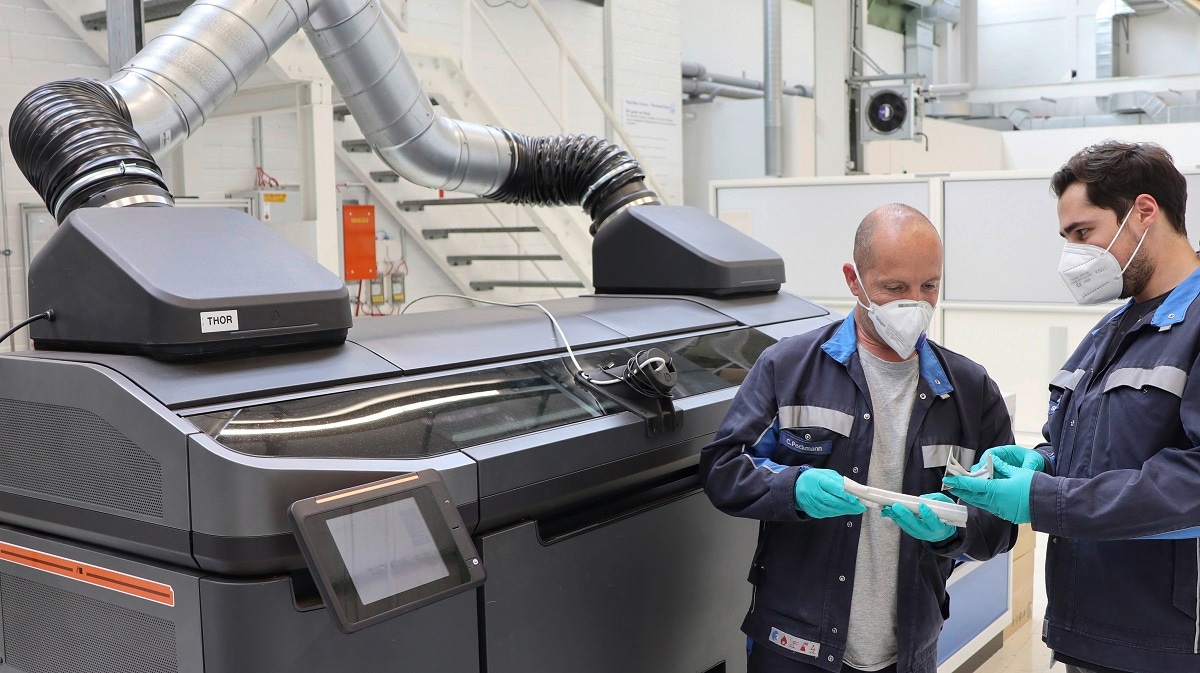Volkswagen Using Advanced 3D Printing Process to Make PartsVolkswagen Using Advanced 3D Printing Process to Make Parts
The new process, called binder jetting, reduces costs and increases productivity because components can weigh only half as much as conventional parts made from sheet steel.

Volkswagen turns to an adhesive-based 3D printing process in a bid to manufacture hundreds of thousands of vehicle parts annually at one of its plants.
The new process, called binder jetting, is being used to create components at the automaker’s main plant in Wolfsburg, Germany. Conventional 3D printing uses a laser to build a component layer by layer from metallic powder, while binder jetting uses an adhesive. The resulting metallic component is then heated and shaped.
The new process reduces costs and increases productivity because components can weigh only half as much as conventional parts made from sheet steel. VW currently is the only automaker using this 3D printing technology in the production process.
By 2025, VW says it aims to produce up to 100,000 components by 3D printing in Wolfsburg each year. The first components made using the binder jetting process, for the A-pillar of the T-Roc convertible, have gone to Osnabrück for certification.
VW says it already has successfully conducted crash tests on 3D-printed metallic vehicle components. Until now, the production of larger volumes was not cost-effective enough; however, now the new technology could make production-line use economically viable.
The automaker has entered into a software partnership with Siemens and expanded its existing collaboration with printer manufacturer HP. One key process step the partners have worked on is optimizing the positioning of components in the build chamber. Known as nesting, this technique makes it possible to produce twice as many parts per print session.
Christian Vollmer, member of the board of management of the Volkswagen brand responsible for production and logistics, says: “Despite the ongoing challenges of the coronavirus pandemic, we’re continuing to work on innovation. Together with our partners, we aim to make 3D printing even more efficient in the years ahead and suitable for production-line use.”
About the Author
You May Also Like

